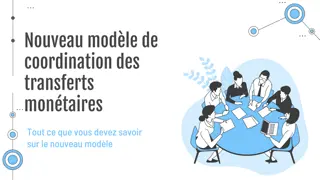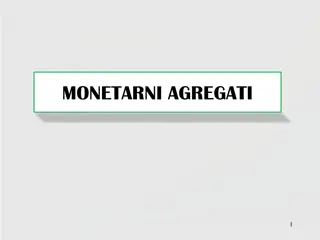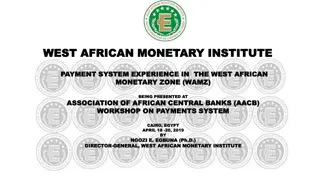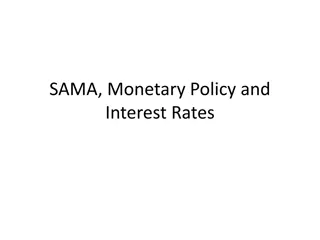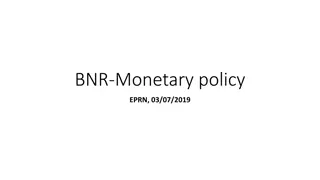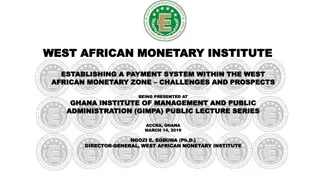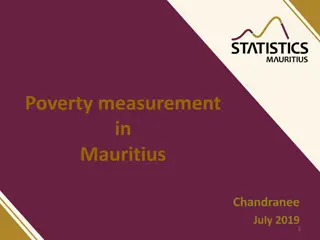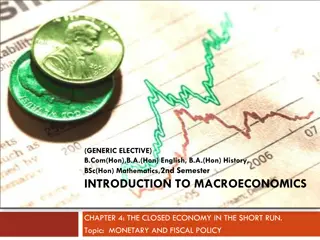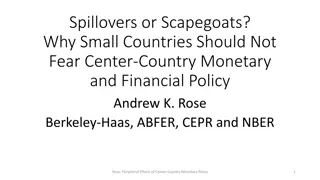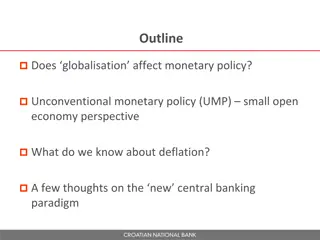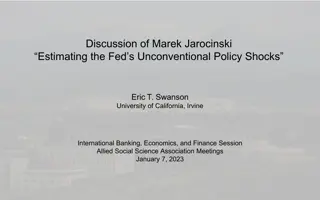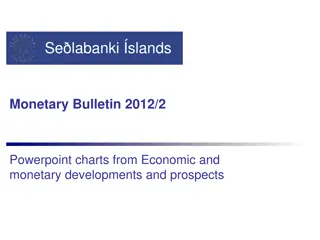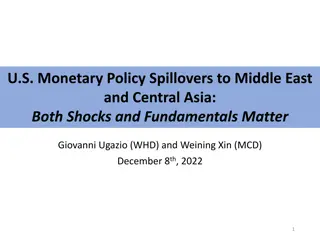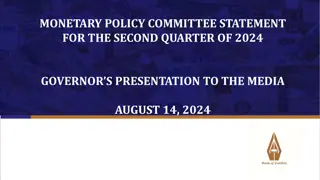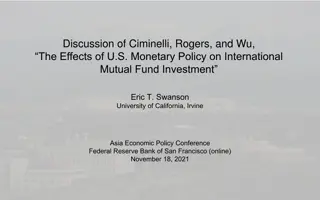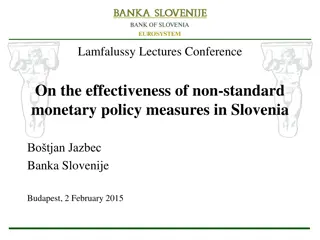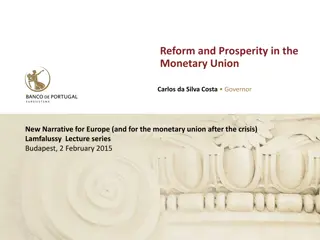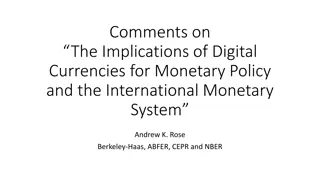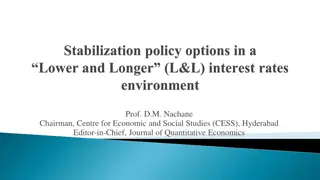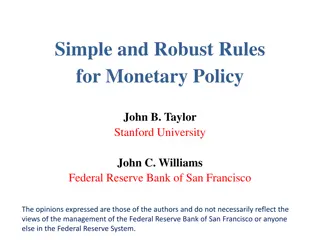
Understanding Monetary Policy and Its Objectives
Learn the meaning, definitions, objectives, instruments, and the role of monetary policy in developing countries. Explore how monetary policy influences the supply of money, interest rates, economic growth, employment, and more.
Download Presentation

Please find below an Image/Link to download the presentation.
The content on the website is provided AS IS for your information and personal use only. It may not be sold, licensed, or shared on other websites without obtaining consent from the author. If you encounter any issues during the download, it is possible that the publisher has removed the file from their server.
You are allowed to download the files provided on this website for personal or commercial use, subject to the condition that they are used lawfully. All files are the property of their respective owners.
The content on the website is provided AS IS for your information and personal use only. It may not be sold, licensed, or shared on other websites without obtaining consent from the author.
E N D
Presentation Transcript
MEANING OF MONETARY POLICY Introduction- Monetary policy is concerned with the changes in the supply of money and credit. It refers to the policy measures undertaken by the government or the central bank to influence the availability, cost and use of money and credit with the help of monetary techniques to achieve specific objectives. It aims to influence two majorvariables: 1. Money or Credit Supply 2. The rate of interest.
DEFINITIONS the management of the expansion and contraction of the volume of money in circulation for the explicit purpose of attaining a specific objectives such as full employment, by R.P. Kent According to Shapiro, Monetary Policy is the exercise of the central bank s control over the money supply as an instrument for achieving the objectives of economic policy.
OBJECTIVES Various objectives or goals of monetary policy are: Neutrality of money Exchange stability Price stability Full Employment Economic growth
INSTRUMENTS OF MONETARY POLICY The monetary authority can influence the level of aggregate demand for the purpose of achieving specific economic objectives through three prime levers: 1. Supply of Money 2. Cost of Money 3. Availability of Credit The instruments of monetary policy are the devices through which supply and cost of money and availability of credit can be affected in Qualitative or Quantitative terms.
QUANTITATIVE AND QUALITATIVE INSTRUMENTS Bank rate Open Market Operations Variations in Reserve Requirements Ceiling on Advances Advances Directives Moral suasion Consumer Credit Regulations These instruments influence upon supply, cost availability of money which ultimately shape the pattern of variations in the level of general level of economic activity. and aggregate demand and the
ROLE OF MONETARY POLICY IN DEVELOPING COUNTRIES Developing versus Developed Economies- The monetary policy in a developing economy will have to be quite different from that of a developed economy mainly due to different economic conditions and requirementsof the two typesof economies. A developed economy may adopt full employment or price stability or exchange stability as a goal of the monetary policy. But in developing economy economic growth is the primary and basic necessity. Thus, in a developing economy the monetary policy should aim at promoting economicgrowth.
ROLE OF MONETARY POLICY IN DEVELOPING COUNTRIES .contd. Monetary Policy can developmental requirements economies: Developmental Role Creation and Expansion of financial Institutions Effective Central Banking Integration of Organised and Unorganized Money Market Developing Banking Habits Monetisation of Economy serve the of following developing
ROLE OF MONETARY POLICY IN DEVELOPING COUNTRIES .contd. Integrated Interest Rate Structure Debt Management Maintaining Equilibrium in Balance of Payments Controlling Inflationary Pressures Long Term Loans for Industrial Development Reforming Rural Credit System
LIMITATIONS AND PROBLEMS OF MONETARY POLICY LIMITATIONS- Monetary policy has been defined as a policy of the central bank to control the money supply for achieving the objectives of general economic policy. This implies that the problem of monetary determination of the optimal quantity of money, or in dynamic conditions, the optimal rate of growth of the money stock. But in actual practice, it is difficult not only to define but also to determine the optimal moneystock. policy is the
LIMITATIONS AND PROBLEMS OF MONETARY POLICY ..contd. So in real world monetary policy faces a number of problems which reduces its scope and effectiveness, which are- Conflicting Goals Lags in Monetary Policy: 1. Recognition Time Lag 2. Action Time Lag 3. Inside Time Lag 4. Outside Time Lag Changes in Velocity of Money: Velocity of money can vary in number of ways----- Development of NBFIs
LIMITATIONS AND PROBLEMS OF MONETARY POLICY ..contd. Portfolio Adjustment of Commercial Banks Intensive Use of Available Money Supply Target Problem Indicator Problem
EFFECTIVENESS OF MONETARY POLICY IN BOOM AND INFLATION In Boom: The basic problem during boom time is one of an overly expansion of aggregate demand. An anti- inflationary policy stressed upon reduced money supply and increased interest rate structure. A combination of tight money and credit measures may keep the system in equilibrium at full employment without inflation. We can follow the following measures to control the supply of money: 1. Changes in the velocity of money
EFFECTIVENESS OF MONETARY POLICY IN BOOM AND INFLATION .contd. 2. Commercial bank portfolio adjustment 3. Growth of NBFIs 4. Evolution of methods of more effective use of available funds 5. Risk destabilisation 6. Debt management operations 7. Discriminatory Effect 8. Uncertainty concerning appropriate monetary policy.

